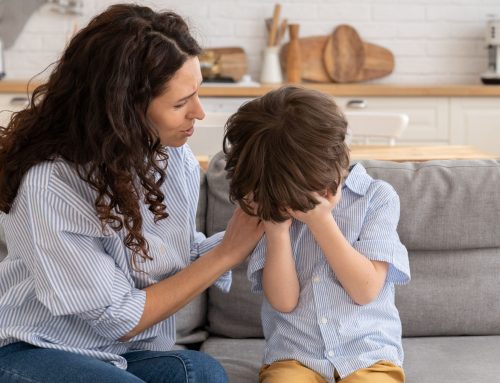What do I say to my anxious child?
There are an overwhelming amount of children needing support at the moment, and the most common reason for being referred to a child psychologist is because of experiencing overwhelm and anxiety. This may be expressed in overthinking, avoidance of situations, in anger or in withdrawal. Sometimes anxiety is specific to a situation, in response to a traumatic experience or can be quite generalised. Regardless of the cause of anxiety, children who are feeling anxious also feel dysregulated, out of control, and often feel disconnected from others. They need to have a feeling of safety and support in order to stretch themselves past that anxious feeling that is overwhelming them or holding them back. They need to feel that the danger that they are perceiving can be overcome.
In order to help them to feel calm, we have to help them to calm both their bodies and their minds. That is why we talk about calming techniques, grounding techniques and refocusing strategies (See our workshop on understanding and managing anxiety).
It is impossible to think calmly if our bodies are not calm and feel out of control.
So the first thing to do is to try and help your child feel PHYSICALLY calm and safe.
The next thing is to COMMUNICATE with them that you are there to help them and that you can help them to feel calmer. These are some phrases that you can use:
It’s okay to feel worried about this, – everyone feels worried sometimes.
Is this a fear or a fact?
I can see that you are scared to try that. Should we try it together this time first?
I know that you are feeling worried, and this feeling won’t last forever
I will stay with you until the feeling is not so big
It feels like the anxiety is controlling you. Let’s think what you need to be in charge of the anxiety
Even though it feels like a lot for you to manage, I believe that you can do this.
If you want me to, I will stay with you until you feel calmer.
When communicating with your anxious child:
- Use a soothing tone: Speak in a gentle, soothing voice to convey that you are there to help and support them.
- Acknowledge their feelings: Start by acknowledging your child’s emotions by reflecting how you think they might be feeling. For example, say something like, “I can see that you’re feeling upset/sad/angry right now.”
- Empathise with them. Show empathy and understanding by saying something like, “I understand why you might feel this way. It’s okay to have these feelings.” It is also helpful to talk to them about ‘feeling’ anxious rather than ‘being’ anxious, as the former implied that this can change.
- Offer physical comfort: Sometimes, a hug, holding their hand, or gentle patting on the back can provide immediate comfort and reassurance.
- Ask open-ended questions: Encourage them to express their feelings and thoughts by asking open-ended questions like, “Can you tell me what’s bothering you?” or “Would you like to talk about it?”
- Validate their feelings: Let your child know that it’s normal to feel the way they do and that their feelings are valid. You can say, “It’s okay to feel this way, and I’m here to help you through it.”
- Provide reassurance: Reassure your child that you’re there to protect and support them. You might say, “I’ll stay with you until you feel better,” or “We’ll figure this out together.”
- Offer solutions or coping strategies: Depending on the situation, you can suggest ways to cope with their feelings or resolve the issue. For instance, you can say, “Let’s take a deep breath together,” or “Would you like to draw or write about how you’re feeling?”
- Be patient: Give your child time to express themselves and work through their emotions. Avoid rushing them or dismissing their feelings.
- Model calm behaviour: Children often learn from their parents’ reactions, so modelling calmness and emotional regulation can be beneficial. Stay composed and demonstrate how to manage difficult emotions effectively.
There is no one size fits all approach – every child is unique, and what works for one may not work for another. Pay attention to your child’s cues and adjust your approach accordingly. The key is to create a safe and supportive environment where your child feels heard and loved as they navigate their emotions.
If you would like to access our course on UNDERSTANDING AND MANAGING ANXIETY, click here. If you want more targeted practical advice to support children with their emotional regulation, managing anxiety and anger, building confidence, social skills and resilience, click here to have a look at our 8 SESSION online POWER course, which has a wealth of information on supporting your children to manage life’s challenges and be the best ‘me’ that they can be.




